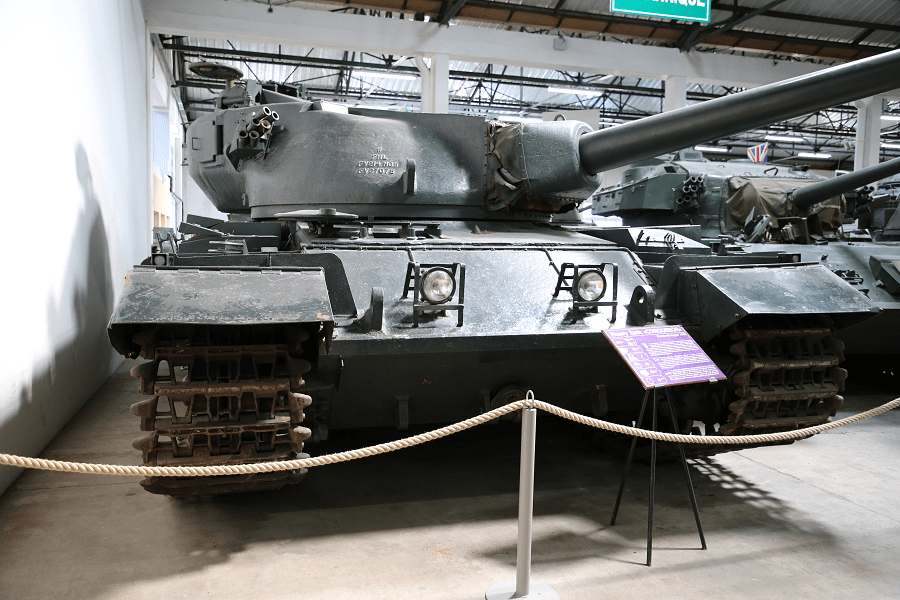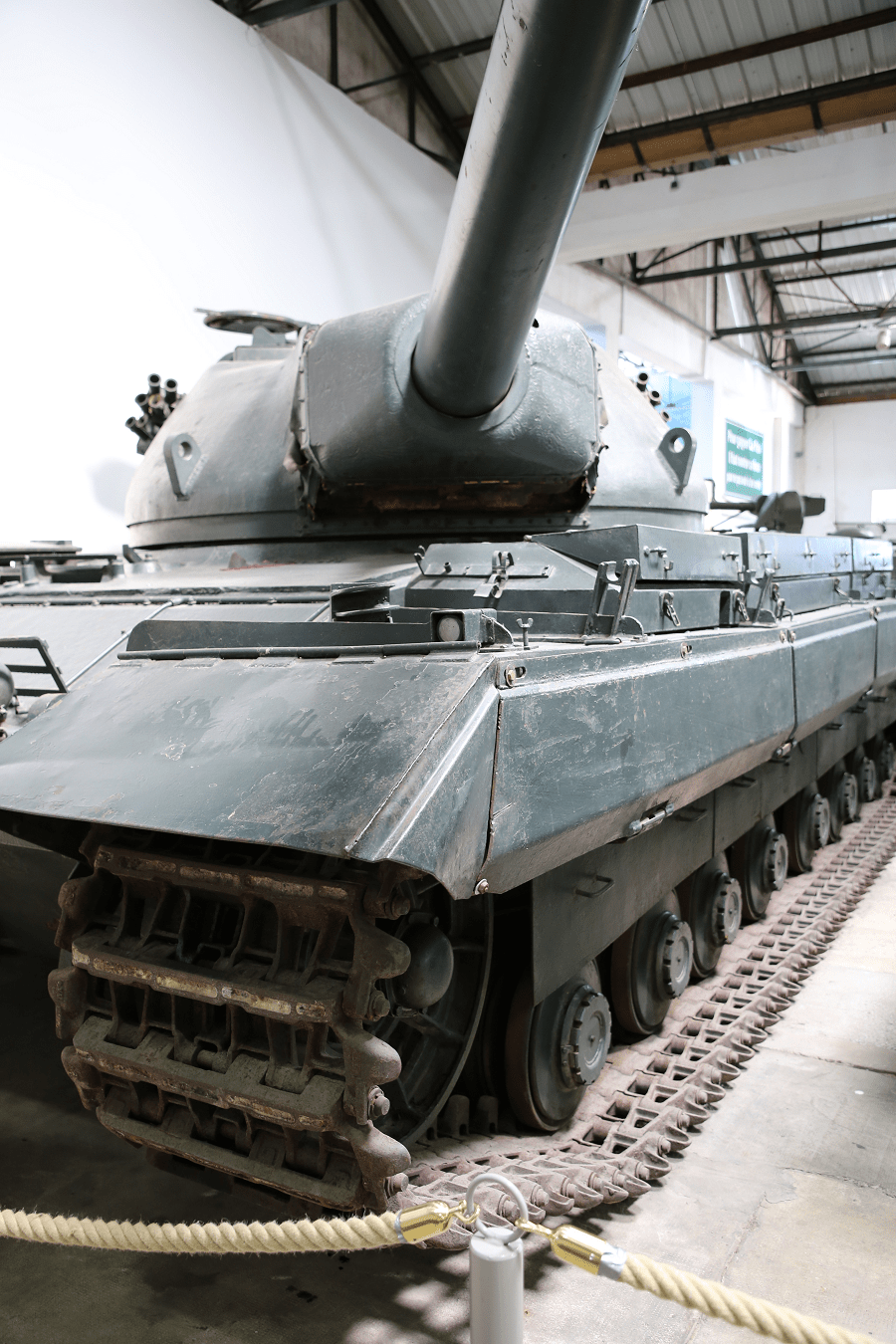The FV 214 Conqueror, also known as Tank, Heavy No. 1, 120 mm Gun, Conqueror was a British heavy tank of the post-World War II era. It was developed as a response to the Soviet IS-3 heavy tank. The Conqueror’s main armament, an L1 120 mm gun, was larger than the 20-pounder (83.4 mm) gun carried by its peer, the Centurion. The Conqueror’s role was to provide long range anti-tank support for the Centurion. Nine Conquerors were issued for each regiment in Germany, usually grouped in three tank troops. In the British Army both the Conqueror and the Centurion were replaced by the Chieftain.
The chassis was from the A 45 Infantry Support Tank, a project started in 1944 shortly after that of the A 41 Centurion. After the war, the project was relocated to that of the “Universal Tank” design of the FV 200 series. The 200 series was to have used a common hull for all uses (self-propelled artillery, armoured personnel carrier, three varieties of tank, etc.). One tank type was to be the heavy FV 201 of 55 tonnes, armed with an 83.8 mm gun.
In 1949, it was decided to bring the armament up to 120 mm. As this delayed the project, in 1952 the FV 201 hull was combined with a 17 pounder-armed Centurion Mk 2 turret to give the FV 221 Caernarvon Mark I.
Twenty-one were built with the Mk III 20 pounder turret as the Caernarvon Mk II. The FV 221 may originally have been intended to be the “Main Battle Tank” member of the FV 201 series but with the success of the A 41 Centurion such a vehicle was no longer required. In either event, the Caernarvon was only used for chassis development work serving in troop trials. In 1955, the first Conqueror was produced. Twenty Mark 1 and 165 Mark 2 Conquerors were built, including conversions of Caernarvon Mk IIs. Production continued until 1959. It lost much tactical relevance once the Centurion was upgraded to an L7 105 mm gun.
The new, larger-calibre gun design was American, the same as used on the US M103 heavy tank; with separate charge and projectile, as would also be the case in the Chieftain that followed. The charge was not bagged but in a brass cartridge, which offered some safety advantages, but reduced shell capacity to 35.
Manufacturer: Royal Ordnance Factory, Dalmuir.













